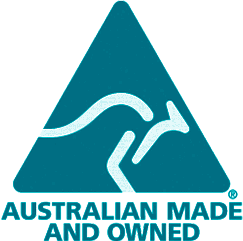Tank Cleaning
Cleaning Tanks
Silver and Hydrogen Peroxide
The best solution to clean your tanks when you are unsure of the condition or bacterial content. This uses non-offensive, easy to source items which are highly effective and nontoxic.
Using Colloidal Silver and Hydrogen Peroxide for cleaning the tanks and pipe work in your Recreational Vehicle.
The safest way to kill bacteria and remove dirt, etc from your tanks and pipe work without resorting to chlorine is to use Colloidal Silver and Hydrogen Peroxide (Mouthwash).
SILVER + HYDROGEN PEROXIDE
Where to get it –
Ø Colloidal Silver, you can get this from a health food store. It comes in liquid form in a brown glass bottle.
(Or if you have any one of the B.E.S.T. Water Filters that produces silver, this will substitute for having to purchase the Colloidal Silver.)
Ø The Hydrogen Peroxide is available from your local Chemist. Try to get the strongest percentage, 5% is usually stocked and sometimes you can find 6% - this is the best to use. (If you cannot get either of these, then the 3% will still work, just not as quickly.)
How much to use –
You have to work out how much water your tank/s hold, and make sure they are almost full. (You will be adding an extra litre of water when you add the water/silver/hydrogen mix, so make sure the tank is not overflowing with water.)
Ø For each litre of water, you will need to add 2ml. (It does not matter if you put too much silver into your water, as this is not harmful. The amount given above is your guide to the minimum required. You can put a whole bottle of Colloidal Silver into the tanks if you prefer.) (If using a B.E.S.T. Water Filter, skip any reference to adding silver and simply fill the tanks through the B.E.S.T. Water Filter as this will add a small amount of silver from the unit.)
Ø For each litre of water, you will need to add 2ml of Hydrogen Peroxide. (Again this a guide to the minimum required.)
How to use –
Ø In a bucket, add approximately 1 litre of water. Add the Colloidal Silver to the water, and then add the Hydrogen Peroxide to the water. Give it a stir, and then add the mix to your tank/s.
Ø This will need to sit in your tank/s for a minimum of 20 minutes. For very dirty tank/s, you may need to stir up the water to dislodge any biofilm that may have formed inside them. To do this, simply take a bumpy, shaky 20-minute drive!
You can leave this solution in your tanks for as long as you like (2 weeks or even 2 months) if you want to make sure it has worked effectively.
IMPORTANT NOTE:You need to make sure the breathing holes are clear before you put the solution in your tank/s to allow air to release. When you add Colloidal Silver and Hydrogen Peroxide together, they react and create millions of tiny air bubbles that will release from the water. An extra measure is to turn off your pump and turn on your kitchen/bathroom taps to allow air to escape from there. This is especially important if you are planning to leave it sit in the tanks for an extended period.)
How to finish –
Ø Drain the water from your tanks. Depending on how dirty the water is coming out, you may have to flush clean water through your tanks to remove any dirt, clumps of biofilm, etc, that may be lying in the bottom. When you are happy with the colour of the water draining away, fill up your tanks, ready to go!
Have a great trip!!!
Note- we do not endorse the use of pre-mixed silver and hydrogen peroxide as an ongoing treatment because of the aggressiveness of the high levels of hydrogen peroxide and the low levels of silver. The premix is OK for a shock treatment only and must be handled with care.
These mixtures often have levels of 35% Hydrogen peroxide. The chemist is only allowed to sell 6%.
Because the silver has already activated the hydrogen peroxide, once the container is opened, it starts to lose its effectiveness.
Note. Once you start filling your RV tanks with a B.E.S.T. RV Water Filter, there will be no need to repeat this treatment.
On the other hand, if you are using a domestic filter either for filling or under the sink, this process should be used regularly.

